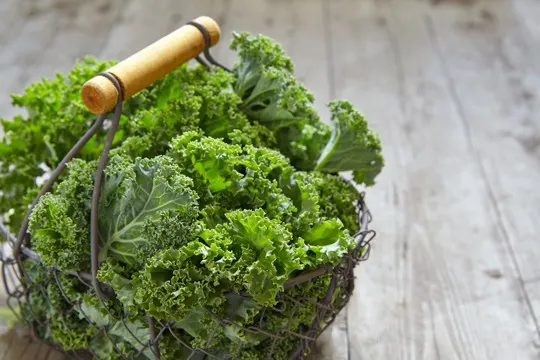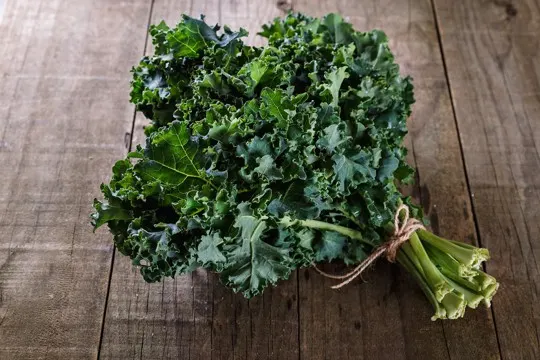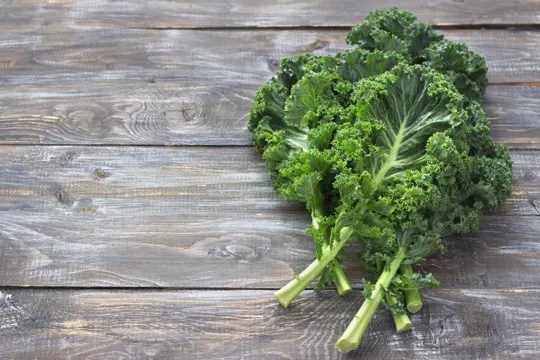Kale is a green leafy vegetable that belongs to the same family as cabbage, collards, and broccoli.
It has been used for centuries in many cultures worldwide, especially in Europe, often cooked with meat or other vegetables.
Today, kale is used more often as an ingredient in salads than anything else because of its nutritional benefits.
In this article, we will cover what kale is, what it tastes like, and the benefits of eating it.
What is Kale?

Kale is a vegetable that comes from the Brassica group of plants.
It has curly green leaves and other colors like red, purple, or even yellow.
It also can be found in a curly, frilly form.
Most people think of kale when they hear the word “cabbage” because it is a close relative.
Kale can grow in most climates but does best in the cool weather where there is plenty of moisture.
It is a hardy plant and can survive in temperatures as cold as 20 degrees Fahrenheit.
Some people are wary of kale because they think it tastes too strong, but this vegetable has been around for centuries without losing any popularity.
As more scientific discoveries come to light about the benefits of eating vegetables year-round, people will continue to eat kale for its high levels of vitamin K, calcium, and immunity-boosting properties.
Kale can be eaten raw when young and tender or cooked later in life, even after the leaves become tougher.
It is a nutritional powerhouse containing lots of vitamins, minerals, and cancer-fighting properties.
Nutritional Benefits of Kale

We all know that kale is good for us, but why? It’s a powerhouse of nutrition.
Kale has plenty of calcium.
Calcium helps our cells stay healthy and repair any damage done to them throughout the day.
Without enough calcium in your diet, you can develop weakened bones or osteoporosis as you age.
Kale has a good amount of Vitamin A, which is necessary for your eyesight—it keeps the retina and cornea healthy.
Kale contains plenty of iron.
Iron helps with transporting oxygen through our blood to all parts of the body where it’s needed most.
Without enough iron in your diet, you can become anemic over time.
Kale is a rich source of Vitamin C, which helps our bodies fight off infections and repair damaged cells caused by free radicals in the environment or from smoking cigarettes.
Kale also contains other important vitamins like B-complex vitamin (B12) and folate to help keep us healthy.
It also has plenty of fiber, which helps with the digestive process and prevents constipation.
Once you start incorporating kale into your diet, you’ll see the benefits.
It tastes good and has plenty of vitamins to help our bodies stay healthy.
What Does Kale Taste Like? Does Kale Taste Good?

One thing that I’ve been trying to do is eat more vegetables.
They are so good for your body, and they can fill you up without taking too many calories away from the rest of what you’re eating during a meal – especially if you pair them with some other protein like beans or eggs.
One vegetable that I think has the best flavor in the bunch is kale.
It’s earthy but not too overpowering.
I was surprised to find out that it has a bit of a sweet flavor as well.
The taste of kale is really hard to describe.
I would say that it’s a little bit earthy and dark, but there is also some sweetness on the back end of each bite.
It is similar in flavor to cabbage.
Kale can be eaten raw or cooked.
When eating it raw, it is typically mixed with dressing or other ingredients and placed into a salad.
If you are eating kale as a side dish, you can cook it to make it softer.
Once cooked, kale has a mild, sweet taste.
The texture is very similar to spinach, which is a vegetable many people are familiar with.
How to Cook Kale?

Kale can be cooked in various ways, including boiling, steaming, or sautéing for just a few minutes until tender.
The most common way people cook kale, though, is by roasting it atop an open flame which gives kale a crispy texture once charred on all sides.
While this cooking method takes little time, it does require lots of attention to avoid charring the leaves too much without cooking them through.
Please place it in an aluminum foil packet with some olive oil and sea salt to roast kale.
Seal up the packets from any open side to prevent steam from escaping during cooking, leaving you with wilted or soggy leaves.
Place your roasted kale on a baking sheet lined with parchment paper for easy clean-up, then place it in the oven on a rack set just below the top one.
Put your kale packets in for about 12 to 15 minutes, turning them over halfway through the cooking time, so they cook evenly and brown on both sides.
When you take out the packet from the oven, be careful of hot steam as it might burn you if left too close.
Open up the packets carefully to avoid any steam burns, then let them cool before serving.
You must prepare your kale ahead of time by thoroughly washing it with cold water and patting it dry, so there is no moisture left on the leaves.
Kale will wilt if there is too much liquid present, leading to a soggy and wilted texture.
After you cook your kale, it can be served in a variety of ways.
Typically people will mix cooked kale with other ingredients for a salad, or they might serve it alongside dinner as an appetizer to add additional nutrition to their meal.
Experimenting is always the best way to find out what you like best.
How to Choose Kale?

In the grocery store, you can find two types of kale: curly and crisp-leaf.
Some people prefer one type over another, but that’s a personal preference.
To make it easier for you to decide which kind of kale is right for your needs, here are some guidelines on choosing what variety will work best in different dishes.
Do you want a kale salad or recipe that will use the whole head of curly kale? Then go for crisp-leaf.
Do you want to add some texture and flavor with a few leaves in your soup, stew, pasta dish, or another type of vegetable side dish? Try curly.
Curly is also good if you’re looking for a kale side dish.
Always buy the freshest kale you can find because it will have a longer shelf life.
Kale is like other vegetables in that it needs to be stored properly and eaten before its not-so-fresh date expires.
How to Store Kale?

Fresh produce can be a pain to store and handle, but it’s not impossible.
To keep the vitamins intact in your greens, follow these simple steps.
Store kale in an airtight container or plastic bag with holes for ventilation (so they don’t get too humid).
Store them upright so that any excess liquid or condensation can drip off the leaves rather than pooling in them.
Keep your greens in a place that is cool, dark, and dry.
You can store them in the fridge for a short period without much risk to their quality as long as you’re not storing other produce with it (which will cause vegetables like kale to spoil more quickly).
Don’t worry about putting your greens in plastic wrap or using certain containers.
Just make sure they’re not touching anything else and are in an airtight container or plastic bag to keep their moisture level down.
The most important thing is to use your greens as soon as possible so that the nutrients don’t degrade.
Conclusion
In conclusion, kale is a nutrient-rich cruciferous vegetable that is low in calories and high in vitamins.
Kale has various tastes, so you can experiment with it by adding different spices to your dishes or eating kale raw.
Kale also provides many benefits, such as cancer prevention and lowering cholesterol levels.
I hope this post was informative for those of you who are new to kale.

What Does Kale Taste Like? Does Kale Taste Good?
Ingredients
- Kale
- Ingredients from your favorite recipes
Instructions
- Depending on the recipes you choose, the taste can vastly differ.
- For authentic results, it is important to choose a recipe that will highlight the original flavor.
- Have fun experimenting with different recipes and taste tests!
